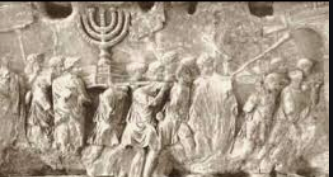|
PART 1 T O P I C |
|
|
|
|
|
|
|
|
|
|
|
|
|
|
|
|
|
|
|
CLICK BUTTON TO GO TO PART |
The Diaspora is
‘The Jews or Jewish communities scattered “in exile” outside Judea/Palestine
or present-day Israel.
Go to Countries
and then click on the country of interest to find out what happened to them.
(See also
What is a Diaspora)
JewishWikipedia.info
ANCIENT DIASPORAS
The Jewish Virtual Library
The Jewish state comes to an end in 70 BCE, when the Romans begin to actively drive Jews from the home they had lived in for over a millennium. But the Jewish Diaspora ("diaspora" ="dispersion, scattering") had begun long before the Romans had even dreamed of Judaea. When the Assyrians conquered Israel in 722, the Hebrew inhabitants were scattered all over the Middle East; these early victims of the dispersion disappeared utterly from the pages of history. However, when Nebuchadnezzar deported the Judaeans in 597 and 586 BC, he allowed them to remain in a unified community in Babylon. Another group of Judaeans fled to Egypt, where they settled in the Nile delta. So from 597 onwards, there were three distinct groups of Hebrews: a group in Babylon and other parts of the Middle East, a group in Judaea, and another group in Egypt. Thus, 597 BCE is considered the beginning date of the Jewish Diaspora. While Cyrus the Persian allowed the Judaeans to return to their homeland in 538 BC, most chose to remain in Babylon. A large number of Jews in Egypt became mercenaries in Upper Egypt on an island called the Elephantine. All of these Jews retained their religion, identity, and social customs; both under the Persians and the Greeks, they were allowed to run their lives under their own laws. Some converted to other religions; still others combined the Yahweh cult with local cults; but the majority clung to the Hebraic religion and its new-found core document, the Torah.
In 63 BC, Judaea became a protectorate of Rome. Coming under the administration of a governor, Judaea was allowed a king; the governor's business was to regulate trade and maximize tax revenue. While the Jews despised the Greeks, the Romans were a nightmare. Governorships were bought at high prices; the governors would attempt to squeeze as much revenue as possible from their regions and pocket as much as they could. Even with a Jewish king, the Judaeans revolted in 70 CE, a desperate revolt that ended tragically. In 73 CE, the last of the revolutionaries were holed up in a mountain fort called Masada; the Romans had besieged the fort for two years, and the 1,000 men, women, and children inside were beginning to starve. In desperation, the Jewish revolutionaries killed themselves rather than surrender to the Romans. The Romans then destroyed Jerusalem, annexed Judaea as a Roman province, and systematically drove the Jews from Palestine. In a further rebellion Bar Kochba was defeated in 135 CE. Since then Hebrew history would only be the history of the Diaspora as the Jews and their view spread over the world.
During the Hellenistic and Roman periods,
Jews established communities in new regions,
from Antioch to Alexandria.
Jewish Learning, Robert M.Selzer
The first permanent Jewish diaspora was the settlement in Babylon created by Nebuchadnezzar’s deportations from Judah in the 590s-580s [BCE]. (The Israelites exiled by the Assyrians in the 720s did not long survive as a separate group.) Although the Babylonian Jews returned to Jerusalem in several waves during the Persian period, a sizeable Jewish population continued to reside in Mesopotamia, and…played an influential role in Jewish intellectual history beginning in the third century CE.
In Egypt, Jewish settlements were established by Jewish soldier contingents brought there by the Persians. These exilic and postexilic communities were a modest prelude to the remarkable expansion in the numbers and distribution of diaspora Jews that occurred in the Hellenistic era
Diasporas were a common feature of the Hellenistic-Roman world. In the fourth century BCE, colonies of Egyptian, Syrian, and Phoenician merchants were frequently in the seaports of Greece and Italy. After the conquests of Alexander the Great, Greeks and Macedonians constituted an immense diaspora throughout the Near East. Ethnic resettlement and religious diffusion went hand in hand, as settlers brought with them ancestral cults and won for their gods new worshippers among the local population. Although not unique, the Jewish diaspora was outstanding in its ability to preserve and perpetuate its identity at considerable distance from the homeland and over large stretches of time.
Egypt
Several factors guided the spread of the Jewish dispersions in Hellenistic times, of which the political history of the Mediterranean basin was the most important. During Ptolemaic rule of Judea, large-scale Jewish settlement in Egypt began. Under the first Ptolemies, Jewish captives, when freed, established communities throughout the country. The Ptolemies brought in Jewish soldiers and their families, and other Jews migrated from Judea to Egypt probably for economic reasons.
At its height, Egyptian Jewry in Hellenistic time was highly diversified: There were peasants and shepherds, Jewish generals in the Ptolemaic army, and Jewish officials in the civil service and police. At Leontopolis, an Aronide priest form Jerusalem founded a small temple with a sacrificial cult modeled on that of Jerusalem. (The shrine survived for over two centuries until just after 70 CE, but it does not seem to have been an important place of worship for Egyptian Jewry as a whole.)
Alexandria, the capital of the Ptolemies and the intellectual center of Hellenistic civilization, became one of the most populous Jewish communities in the world between the third century BCE and the end of the first century CE, numbering several hundred thousand at least. Alexandrian Jewry included wealthy merchants, bankers, and shippers at one end of the social spectrum and masses of Jewish artisans and shopkeepers at the other. The Ptolemies also founded Jewish colonies in the cities of Cyrenaica (modern-day Libya). The Falashas [or “exiles” in Amharic], black Jews of Ethiopia [who refer to themselves as “Beta Yisrael”, house of Israel], may stem from Egyptian Jewish contacts during Hellenistic and Roman times.
Asia Minor and Other Northern Settlements
The northern diaspora arose when the Seleucids took control of Judea after 200 CE. Around 210-205, the Seleucid King Antiochus III moved several thousand Jewish soldiers and their families from Babylonia to Asia Minor. Within two centuries, large Jewish communities were to be found in Antioch and Damascus, in the Phoenician ports and in the Asia Minor cities of Sardis, Halicarnassus, Pergamum, and Ephesus.
By the turn of the Common Era, Jews lived on most of the islands of the eastern Mediterranean, such as Cyprus and Crete, in mainland Greece and Macedonia, on the shores of the Black Sea, and in the Balkans. Jewish inscriptions from the early centuries CE have been found in the Crimea and in modern Romania and Hungary.
Rome and Other Western Settlements
When the Roman presence was felt in the Near East, the growth of Jewish settlement further west ensued. By the mid-first century BCE, the Roman statesman Cicero, in his speech in defense of Flaccus, insinuates the Jews were a troublesome element among the Roman masses.
Large masses of Jews were brought to Rome as slaves by Roman generals campaigning in Judea. Ransomed by other Jews and augmented by a steady stream of voluntary migrants, they swelled the Roman-Jewish community, despite occasional government efforts, on one pretext or another, to reduce their numbers. According to satirical remarks in the Roman poets, most Roman Jews were poor and some were beggars, but there were Jewish storekeepers, craftsmen, and actors in Rome and visiting Jewish diplomats, merchants, and scholars.
In the later Roman Empire, cities in southern Italy became important Jewish centers and large settlements appeared in western North Africa and in Spain. Jewish groups were found in Gaul (modern-day France) and in the Roman garrison towns on the Rhine. A remark attributed to the Greek geographer Strabo, partly true in his time (the first century BCE), was certainly characteristic of the Roman Empire at its height: “This people has already made it way into every city, and it is not easy to find any place in the habitable world which has not received the nation and in which it has not made its power felt. (Josephus, Antiquities XIV, 115)
MAPPING THE ANCIENT JEWISH WORLD PROJECT
BETWEEN 586BCE - 650CE
University of Haifa
The scope of our research is based on a broad period: the Second Templeand the Mishnah and Talmud period.
This project aim to construct an interactive mapping of the archaeological findings and The literary evidence about Jews around the world.
Based on a vision of information sharing and masses wisdom, the project focuses on creating an interactive map that presents critical points of reference to Jewish communities, findings and writings, as well as a link to the world of contemporary research and relevant bibliography.
The main map relies on the GIS system in order to enable users around the world to learn details using different layers according to different research and knowledge needs.
The project is coordinated by Prof. Eyal Ben-Eliyahu from the Department of History at the University of Haifa, Israel.
The project takes place in the Elijah laboratory - a research lab for crowdsourcing under the mangment of Dr, Moshe Lavee.
Ancient Jewish Diaspora Ancient Jewish Diaspora Research Papers
THE
INCREDIBLE
STORY OF THE JEWISH PEOPLE
The Diaspora is ‘The Jews or Jewish communities scattered “in exile” outside Judea/Palestine
or present-day Israel.
Go to Countries and then click on the country of interest to you to find out what happened to them there.
(See also What is a Diaspora)


|
Mapping the Ancient Jewish World Project |
